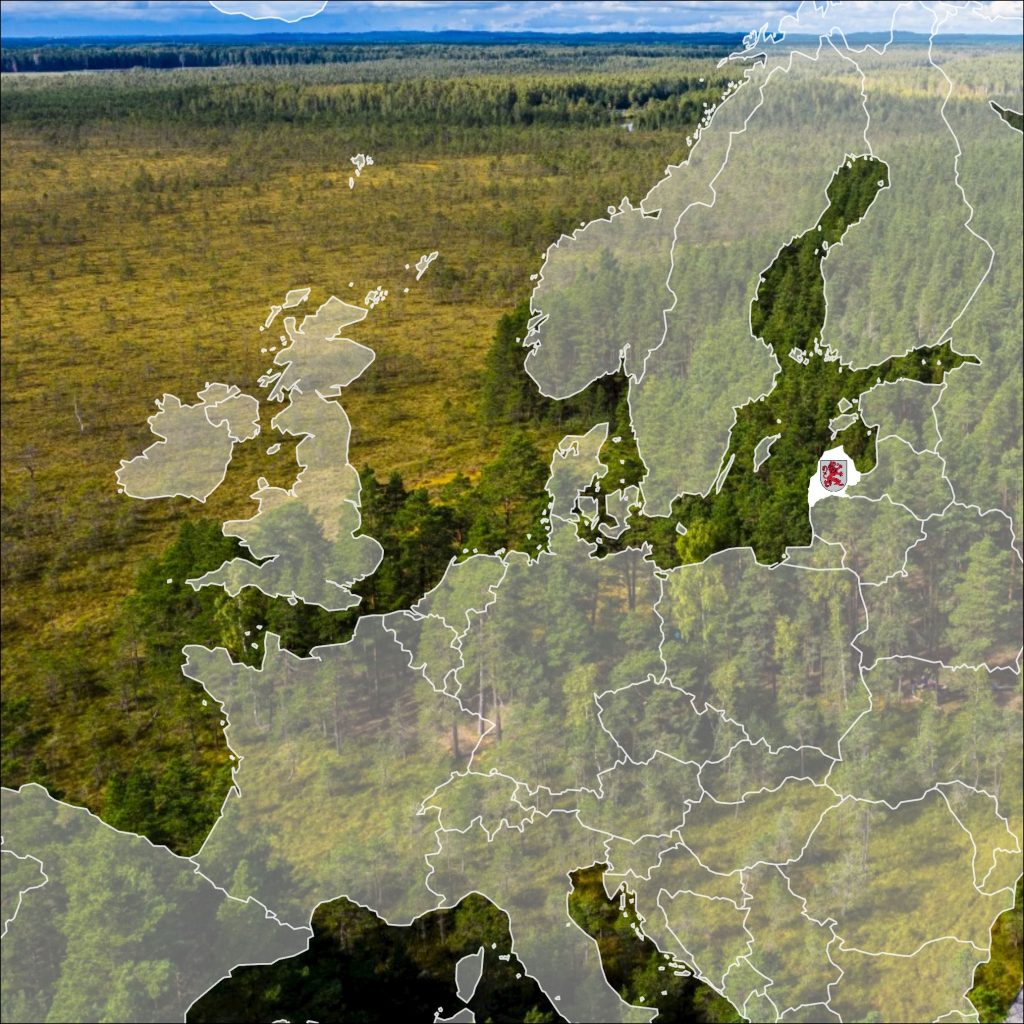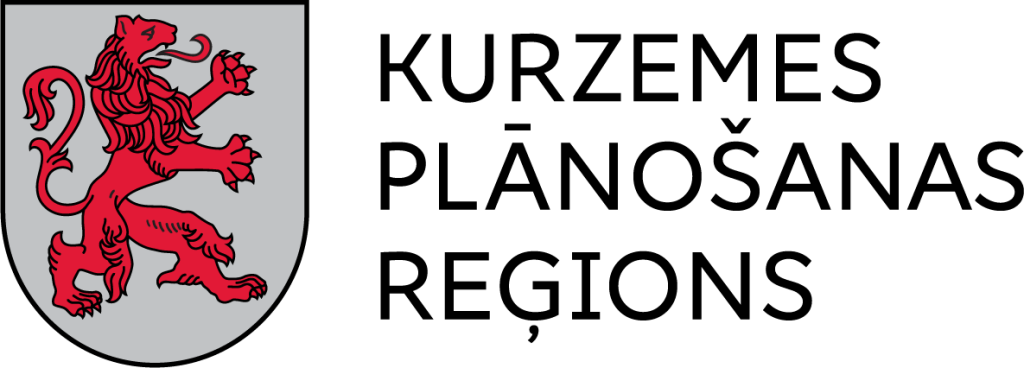About Kurzeme Region
Kurzeme is one of Latvia’s most diverse and distinctive regions – shaped by its long coastline, rich history, and deeply rooted traditions. Located in the western part of the country, it borders the Baltic Sea to the west and Lithuania to the south, while connecting with the Zemgale and Riga regions to the east. It is a region of contrasts – where modern port cities neighbour historic fishing villages, where expansive forests rise over undulating hills, and where cultural identity is deeply embedded in daily life.
Recognised for its striking seascapes, natural richness, and dynamic communities, Kurzeme offers a unique blend of coastal charm, historical depth, and forward-looking development. From white-sand beaches and river valleys to Natura 2000 nature reserves, the region stands out as both ecologically valuable and economically strategic. Its strong maritime legacy, logistical connections, and growing industrial centres make Kurzeme a vital contributor to Latvia’s progress and international cooperation.
Key Facts
- Territory: 16,054 km²
- Length of Baltic Sea coastline: 365 km
- Municipalities: 8 total – 6 counties (Dienvidkurzeme, Kuldīga, Saldus, Talsi, Tukums, Ventspils) and 2 state cities (Liepāja, Ventspils)
- Towns (18): Aizpute, Brocēni, Durbe, Grobiņa, Kandava, Kuldīga, Liepāja, Pāvilosta, Piltene, Priekule, Sabile, Saldus, Skrunda, Stende, Talsi, Tukums, Valdemārpils, Ventspils
- Population: 273,917 (Central Statistical Bureau, as of 01.01.2024)
- Population density: 17.06 inhabitants per km² (CSB, 01.01.2024)
- Rural population: 30.2% (CSB, 01.01.2023)
- Working-age population (15–74): 61.2% (CSB, 01.01.2021)
- Employment rate (15–74): 60.8% (CSB, 01.01.2023)
- Unemployment rate (15–74): 3.8% (CSB, 01.01.2023)
- Ethnic composition: 78.8% Latvian, 11.9% Russian, 9.3% other ethnicities (CSB, 01.01.2023)

Positioned for partnership – Kurzeme’s place in Europe makes it the ideal region for cross-border cooperation and development
Territory and Administrative Structure
Kurzeme covers 24.85% of Latvia’s territory, making it one of the country’s largest planning regions. The largest municipality by land area is South Kurzeme (Dienvidkurzeme), accounting for 22% of the region’s total territory.
The region comprises eight municipalities: six counties – Dienvidkurzeme, Kuldīga, Saldus, Talsi, Tukums, and Ventspils – and two state cities – Liepāja and Ventspils. Together, these municipalities form the Kurzeme Planning Region, a cooperation platform that promotes balanced development, coordinated planning, and effective partnerships.
The region is home to more than 270,000 residents. Its settlement pattern includes 18 towns and over 15,000 smaller populated places – from dynamic urban hubs to remote rural homesteads. The highest population and economic activity are concentrated in and around Liepāja, Ventspils, Saldus, Kuldīga, Talsi, and Tukums – areas that drive regional development and provide a favourable environment for business and innovation.
Nature and Coastline
Kurzeme boasts Latvia’s longest stretch of coastline – 365 kilometres along the Baltic Sea – featuring sandy beaches, dramatic cliffs, dunes, and coastal fishing villages. This coastline is both a natural asset and an integral part of local identity and livelihoods.
The region includes major protected areas such as Slītere National Park, nature reserves, and Natura 2000 sites that support biodiversity and unique ecosystems. Inland, the region is characterised by ancient river valleys, forested hills, and over 200 lakes – making Kurzeme an attractive destination for nature tourism and sustainable development.
Cultural Heritage and Traditions
Cultural diversity is a defining feature of Kurzeme. The region is home to ethnographic communities like the Suiti and Livs, and several subregions – including Bārta, Nīca, Rucava, and Alsunga – where local traditions are actively preserved.
The historical town centres, architectural landmarks, and rich intangible heritage form a vibrant cultural landscape. Kuldīga’s old town, inscribed on the UNESCO World Heritage List in 2023, is an outstanding example of preserved urban planning. Grobiņa – a significant Viking-era archaeological site – is nominated for UNESCO recognition. The Suiti cultural space is listed as Intangible Cultural Heritage in Need of Urgent Safeguarding.
Cultural and Natural Values
Kurzeme stands out for its extraordinary natural and cultural wealth. The region features more than 200 rivers and lakes, including the large and popular Lake Usma – a favourite for anglers and nature tourists alike. Natural parks such as Slītere National Park offer untouched forests, coastal bluffs, and unique ecological systems. Scenic areas like the Talsi hillocks, the Abava River Valley, Cape Kolka, and Lake Engure are important both ecologically and culturally, reflecting centuries of interaction between people and nature.
Culturally, the region preserves valuable architectural and artistic heritage. Kuldīga’s baroque-era buildings, ethnographic traditions in Alsunga, and local festivals are integral parts of community life.
In 2023, Kuldīga’s historic centre was added to the UNESCO World Heritage List. Grobiņa’s archaeological ensemble is a nominated UNESCO site, and since 2009 the Suiti cultural space has been included in UNESCO’s Intangible Cultural Heritage list. These recognitions affirm the global value of Kurzeme’s cultural identity.
Economy and Infrastructure
Kurzeme plays a strategic role in the East–West multimodal transport corridor. Two major ports – Liepāja and Ventspils – and several smaller ports (Pāvilosta, Roja, Mērsrags, Engure) connect the region to global shipping routes. Highways and rail lines link the ports to Riga and beyond, while airports in Liepāja, Ventspils, and near Tukums facilitate regional and international mobility.
The region’s economy is driven by manufacturing, logistics, renewable energy, and tourism. Industrial centres include Liepāja and Ventspils, followed by Brocēni, Tukums, and Saldus – together forming a robust and diverse industrial base. Kurzeme’s access to wind, solar, biomass, and geothermal resources supports the growth of green energy and innovation.
Cross-Border Cooperation and Development
Kurzeme is an active partner in international cooperation, particularly in the Baltic Sea region. The region participates in a wide range of EU-funded initiatives and cross-border projects in collaboration with municipalities, NGOs, public institutions, companies, and education providers.
Focus areas include lifelong learning, coastal development, blue economy, entrepreneurship, cultural and natural heritage, mobility, social services, creative industries, and accessible tourism.










